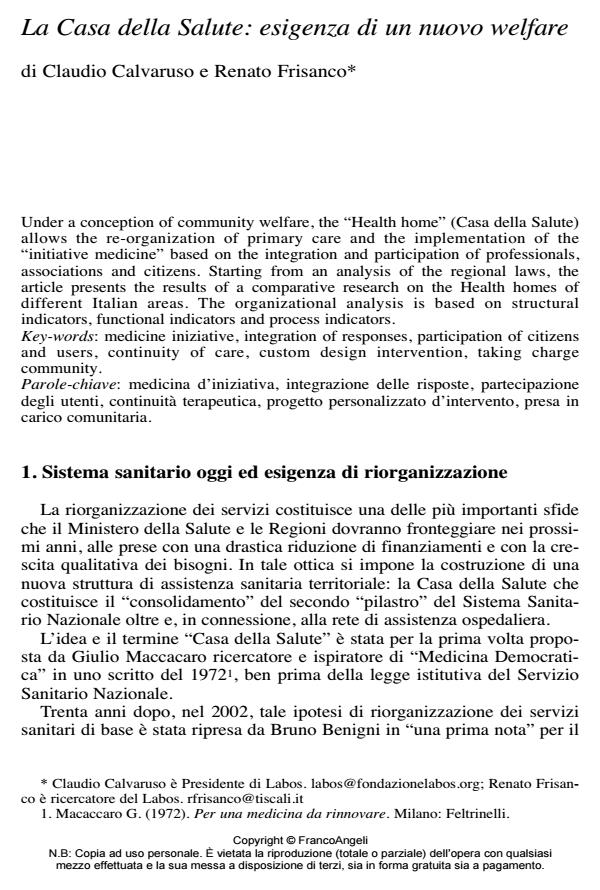The House Of Health: the need for a new welfare
Journal title SALUTE E SOCIETÀ
Author/s Claudio Calvaruso, Renato Frisanco
Publishing Year 2012 Issue 2012/1 Language Italian
Pages 21 P. 183-203 File size 128 KB
DOI 10.3280/SES2012-001013
DOI is like a bar code for intellectual property: to have more infomation
click here
Below, you can see the article first page
If you want to buy this article in PDF format, you can do it, following the instructions to buy download credits

FrancoAngeli is member of Publishers International Linking Association, Inc (PILA), a not-for-profit association which run the CrossRef service enabling links to and from online scholarly content.
Under a conception of community welfare, the "Health home" (Casa della Salute) allows the re-organization of primary care and the implementation of the "initiative medicine" based on the integration and participation of professionals, associations and citizens. Starting from an analysis of the regional laws, the article presents the results of a comparative research on the Health homes of different Italian areas. The organizational analysis is based on structural indicators, functional indicators and process indicators.
Keywords: Medicine iniziative, integration of responses, participation of citizens and users, continuity of care, custom design intervention, taking charge community.
- Community participation and empowerment in primary health care in Emilia-Romagna: A document analysis study Daniela Luisi, Kerstin Hämel, in Health Policy /2021 pp.177
DOI: 10.1016/j.healthpol.2020.11.007 - Social Architecture: the condition for health organization Alessandra Sannella, Barbara Sena, in SALUTE E SOCIETÀ 2/2014 pp.21
DOI: 10.3280/SES2014-002003EN - Morire di disorganizzazione: la gestione sanitaria del Covid-19 in Italia Federico Sofritti, in PRISMA Economia - Società - Lavoro 1/2021 pp.26
DOI: 10.3280/PRI2020-001003
Claudio Calvaruso, Renato Frisanco, La Casa della Salute: esigenza di un nuovo welfare in "SALUTE E SOCIETÀ" 1/2012, pp 183-203, DOI: 10.3280/SES2012-001013